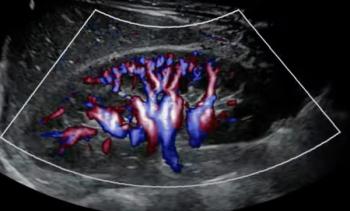
Pertinent Insights into the Imaging of Patients with Marfan Syndrome
Emphasizing the role of radiologists in facilitating timely diagnosis of Marfan syndrome, Alan Braverman, M.D. discussed the use of echocardiography, CT, and MRI in evaluating patients with this genetic aortic condition.
While Marfan syndrome is a clinical diagnosis, Alan C. Braverman, M.D., FACC, noted in a recent interview that radiologists play an “invaluable” role in facilitating early diagnosis of this genetic aortic condition.
“They can be the first to put the words into a clinician's mind that this condition that they're seeing on imaging could be something much more,” emphasized Dr. Braverman, the director of the Marfan Syndrome and Aortopathy Center at the Washington University School of Medicine in St. Louis, Mo.
“When there are combinations of findings — root aneurysm, tortuous arteries, mitral valve prolapse — when these features are seen on an imaging study, not just reporting them in diameters accurately, but also suggesting the possibility of something more, like Marfan syndrome or some genetic aortic condition when unexplained in a young person, in particular, can be so helpful to the clinician. It's invaluable.”
For patients with Marfan syndrome, Dr. Braverman emphasized complete assessment of the proximal aorta. Noting that an enlarged aortic root is common in this patient population, Dr. Braverman said the diameter of the aortic root generally exceeds 40 millimeters in younger male patients and 37 millimeters in younger female patients.
While these findings can be visualized very well on echocardiogram, cross-sectional imaging with computed tomography angiography (CTA) or magnetic resonance angiography (MRA) are recommended for initial diagnosis in adult patients and can aid in differentiating between Marfan syndrome and other conditions, such as Loeys-Dietz syndrome, noted Dr. Braverman, a professor of medicine and alumni endowed professor of cardiovascular diseases at the University of Washington School of Medicine.
(Editor’s note: For related content, see “
For more insights from Dr. Braverman, watch the video below.
Newsletter
Stay at the forefront of radiology with the Diagnostic Imaging newsletter, delivering the latest news, clinical insights, and imaging advancements for today’s radiologists.




























